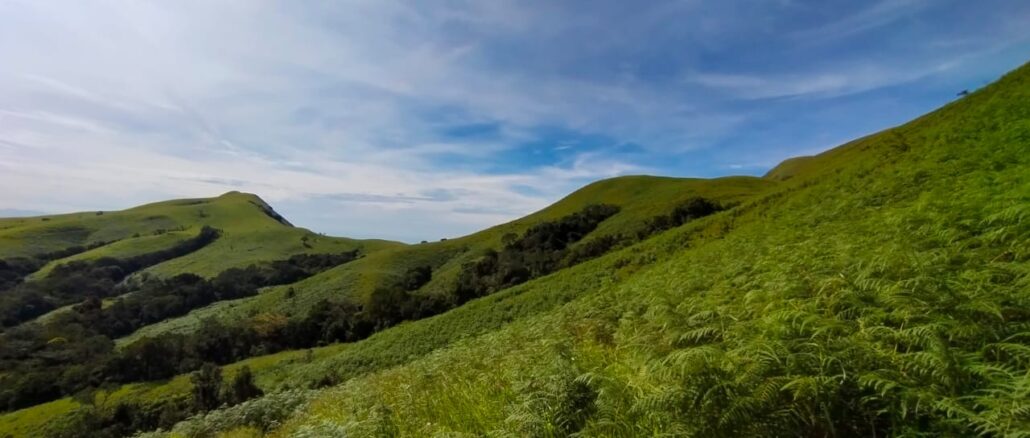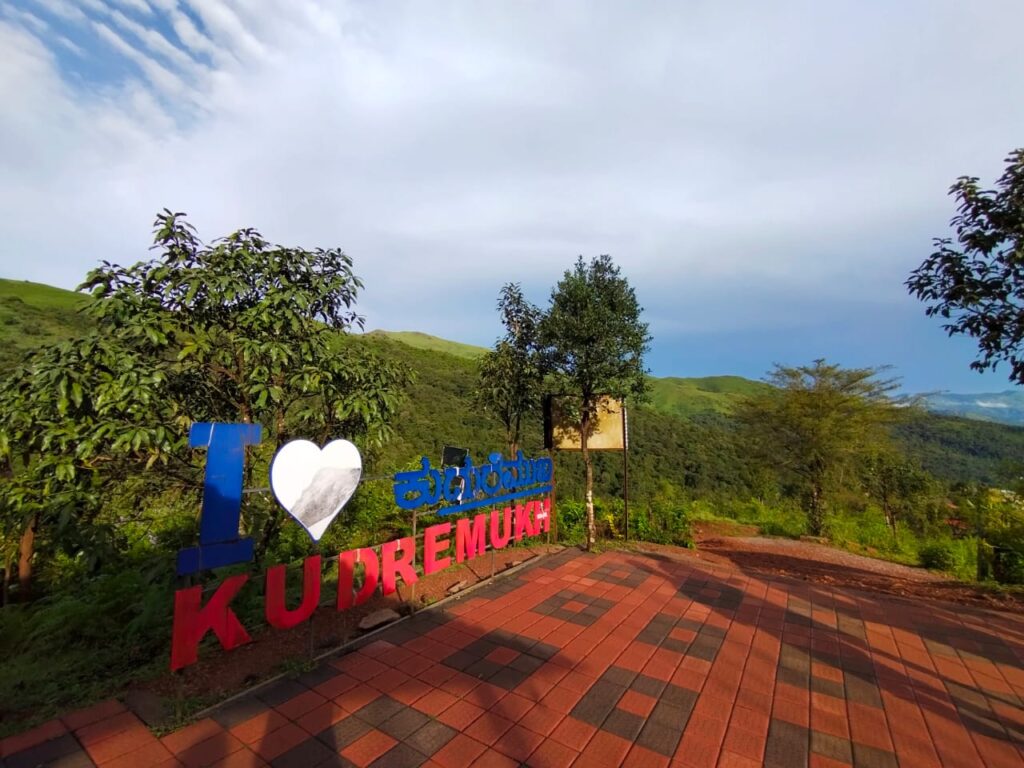
Discover the lush landscapes, thrilling trekking routes, and hidden gems of Kudremukh, Karnataka – the ultimate haven for nature enthusiasts and adventure seekers
Introduction to Kudremukh
Exploring the untamed trails of Kudremukh reveals a treasure trove of natural beauty in the Chikkamagalur district of Karnataka, India. Known as a trekker’s paradise, Kudremukh is celebrated for its rolling hills, dense forests, and the distinctive “horse face” peak, which gives the region its name. This area captivates visitors with lush valleys, sparkling waterfalls, and panoramic vistas, making it a must-visit destination for both seasoned hikers and novice adventurers seeking serenity amidst nature.
The region’s rich biodiversity enhances its appeal. Trekkers can encounter endemic flora and fauna, vibrant bird species, and mammals in their natural habitat. The combination of high-altitude terrain, temperate climate, and post-monsoon greenery ensures that every trek is both physically invigorating and visually mesmerizing. Kudremukh remains relatively uncommercialized, offering an authentic trekking experience away from crowded tourist spots.
What is Kudremukh Famous For?
Kudremukh is famous for its stunning trekking trails, lush green landscapes, and biodiversity-rich forests. It was once home to iron ore mining, which shaped its economic history. Today, it is celebrated for natural attractions such as the Kudremukh Peak, Hanuman Gundi Falls, Hebbe Falls, and Gangamoola, making it a paradise for nature enthusiasts and trekkers alike. The region’s Western Ghats setting, combined with rolling hills and misty valleys, is what makes Kudremukh truly iconic.
Why is Kudremukh Called a Ghost Town?
Kudremukh is sometimes referred to as a “ghost town” due to the closure of its mining operations in 2005. The once-bustling mining town was vacated after environmental concerns led to the establishment of Kudremukh National Park. While the abandoned structures remain as reminders of its mining past, the area has transformed into a serene natural haven. Trekking through these trails, visitors witness the juxtaposition of nature reclaiming human-made spaces, adding a mysterious charm to the region.

Why Kudremukh is a Trekker’s Dream
Kudremukh offers a diverse range of trekking routes, catering to all skill levels. The trek to the Kudremukh peak, standing at approximately 6,200 feet, rewards hikers with sweeping views of the Western Ghats and verdant landscapes. Along the way, trekkers traverse shola forests, grasslands, and rolling hills, making every step a unique adventure.
Other popular trails include Hanuman Gundi Falls, Hebbe Falls, and the Gangamoola trek. Each path provides opportunities to discover hidden streams, cascading waterfalls, and pristine valleys. The rich biodiversity along these trails makes each trek an immersive experience, with frequent sightings of native birds and wildlife enhancing the journey.
For adventure seekers, Kudremukh is not just a trekking destination—it is a space to connect with nature, test endurance, and enjoy the thrill of exploration.
Which City is Closest to Kudremukh?
The closest major city to Kudremukh is Chikkamagalur, approximately 55 km away. Other nearby towns include Kadur (45 km), which serves as the nearest railway station, and Mangaluru (130 km) for air travelers. These cities act as gateways to Kudremukh, providing convenient access to roads, taxis, and local transport that lead into the trekking trails and national park.
Getting There: Accessing Kudremukh
Kudremukh is accessible via air, rail, and road:
By Air: The nearest airport is Mangaluru International Airport, around 130 km away, with connections from Bengaluru, Mumbai, and Chennai.
By Rail: Kadur Railway Station, 45 km from Kudremukh, connects to major cities and is followed by local taxis or buses.
By Road: NH75 connects Bengaluru to Chikkamagalur, with driving times of around six to seven hours. Roads from Mangaluru and Hassan are also well-maintained.
Local transport includes shared jeeps and buses that link trekking trailheads, ensuring smooth access to key spots.
Which is the Best Time to Visit Kudremukh?
The optimal time to visit Kudremukh is from September to February. Post-monsoon months (September–October) bring lush greenery and blooming wildflowers, while November to January offers cooler temperatures, clear skies, and excellent trekking conditions. Each season provides a unique experience, from mist-covered hills to abundant wildlife sightings, making every visit special.
Popular Trekking Routes in Kudremukh
Kudremukh Peak Trek: A 9 km ascent offering panoramic Western Ghats views.
Gangamoola Trek: Approximately 8 km, featuring the convergence of three rivers.
Hebbe Falls Trek: A shorter route (8 km) leading to stunning waterfalls.
Yedakumeri Trek: A 14 km trail with historic railway tracks and valley vistas.
Each route provides varying difficulty levels and breathtaking landscapes, guaranteeing a memorable adventure for every trekker.
Safety Tips for Trekking in Kudremukh
Wear sturdy trekking shoes and moisture-wicking, layered clothing.
Carry essentials like water, snacks, first-aid kits, and navigation tools.
Stick to marked trails and use GPS as a backup.
Be prepared for sudden weather changes with rain gear.
Maintain a safe distance from wildlife and travel in groups.
Being well-prepared ensures a safe and rewarding trekking experience in this pristine environment.
What to Pack for Your Trekking Adventure
Lightweight, moisture-wicking clothing and waterproof gear.
Trekking shoes with good grip, plus casual sandals for rest breaks.
Wide-brimmed hat, sunglasses, and trekking poles.
Non-perishable snacks and sufficient water or purification tablets.
Compact first-aid kit including personal medications.
Proper packing enhances both comfort and safety while exploring the untamed trails of Kudremukh.
Cultural Insights: Local Communities around Kudremukh
Kudremukh is home to Kannada-speaking communities whose traditions are deeply tied to nature. Villagers engage in agriculture, cultivating coffee, pepper, and fruits, while handcrafted bamboo products and textiles reflect local artistry. Festivals like Karaga and Sankranti celebrate heritage and community, offering trekkers insight into the region’s cultural richness. Interactions with these communities enrich the trekking experience, highlighting the symbiotic relationship between humans and nature.
Conclusion: Embrace the Trekking Spirit in Kudremukh
Exploring the untamed trails of Kudremukh provides more than a trekking challenge—it is a journey of connection with nature, culture, and adventure. The verdant hills, cascading waterfalls, and diverse wildlife create a captivating experience for all who venture into this trekker’s paradise. By trekking responsibly and respecting the environment, adventurers can ensure that Kudremukh remains a pristine haven for future generations. Every trail leads to discovery, serenity, and a deeper appreciation for the unspoiled beauty of Karnataka’s Western Ghats.

